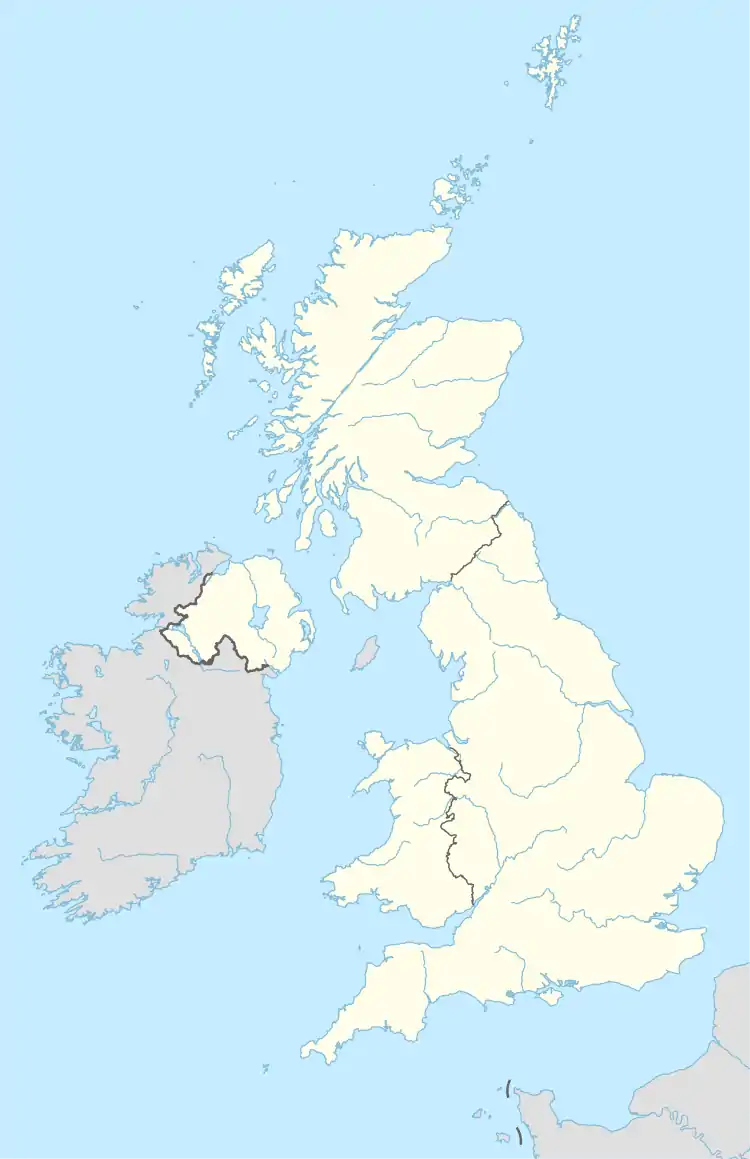East Walton
East Walton is a village in the English county of Norfolk. The village is located 7.8 miles (12.6 km) south-east of King's Lynn and 31 miles (50 km) north-west of Norwich. East Walton constitutes part of the civil parish of West Acre.
| East Walton | |
|---|---|
 St. Mary's Church, East Walton | |
 East Walton Location within the United Kingdom | |
| Area | 10.81 km2 (4.17 sq mi) |
| OS grid reference | TF744157 |
| • London | 88 miles (142 km) |
| Civil parish |
|
| District | |
| Shire county | |
| Country | England |
| Sovereign state | United Kingdom |
| Post town | KING'S LYNN |
| Postcode district | PE32 |
| Dialling code | 01760 |
| UK Parliament | |
History
East Walton's name is of Anglo-Saxon origin and derives from the Old English for 'wall farm settlement.'[1]
East Walton has seen numerous archaeological digs which have discovered the site of a possible Bronze Age burial barrow and three separate Roman settlements.[2]
In the Domesday Book, East Walton is listed as a settlement of 37 households in the hundred of Freebridge. In 1086, the village was divided between the East Anglian estates of Alan of Brittany, Roger Bigod and Ralph de Tosny.[3]
East Walton was the site of significant Second World War defences in preparation for a German invasion, defences including a pillbox and searchlight were installed in the east of the village with a further tank trap built on the bridge over the River Nar.[4] In August 1942, a Dornier 217 shot down by a Bristol Beaufighter flown by Ft-Off. Hugh Wyrill crashed in nearby Walton Wood.[5]
Geography
According to the 2001 Census, East Walton has a population of 94 residents living in 40 households with the parish having a total area of 10.81 km2 (4.17 sq mi).[6]
East Walton falls within the constituency of South West Norfolk and is represented at Parliament by Liz Truss MP of the Conservative Party. For the purposes of Local Government, East Walton falls within the district of King's Lynn and West Norfolk.
St. Mary's Church
East Walton's church is dedicated to Saint Mary and is one of Norfolk's 124 remaining Anglo-Saxon round tower churches. Though the tower pre-dates the Norman Conquest, the rest of the church building dates from the Fourteenth Century, with the interior being significantly remodelled in the early-Eighteenth Century.[7]
Notes
- University of Nottingham. (2022). Retrieved December 27, 2022. http://kepn.nottingham.ac.uk/map/place/Norfolk/East%20Walton
- Robertson, D. (2006). Retrieved December 27, 2022. https://www.heritage.norfolk.gov.uk/record-details?TNF234-East-Walton-(Parish-Summary)
- Domesday Book. (1086). Retrieved December 27, 2022. https://opendomesday.org/place/TF7416/east-walton/
- Robertson, D. (2006). Retrieved December 27, 2022. https://www.heritage.norfolk.gov.uk/record-details?TNF234-East-Walton-(Parish-Summary)
- Rose, E. (1979). Retrieved December 27, 2022. https://www.heritage.norfolk.gov.uk/record-details?mnf15542
- Office for National Statistics. (2001). Retrieved June 20, 2009. https://web.archive.org/web/20170211032229/https://www.norfolk.gov.uk/consumption/groups/public/documents/general_resources/ncc017867.xls Census population and household counts for unparished urban areas and all parishes
- Knott, S. (2020). Retrieved December 27, 2022. http://www.norfolkchurches.co.uk/eastwalton/eastwalton.htm
External links
![]() Media related to East Walton at Wikimedia Commons
Media related to East Walton at Wikimedia Commons
- Village website
- St Mary's on the European Round Tower Churches Website
- The web site for St Mary's Church, East Walton